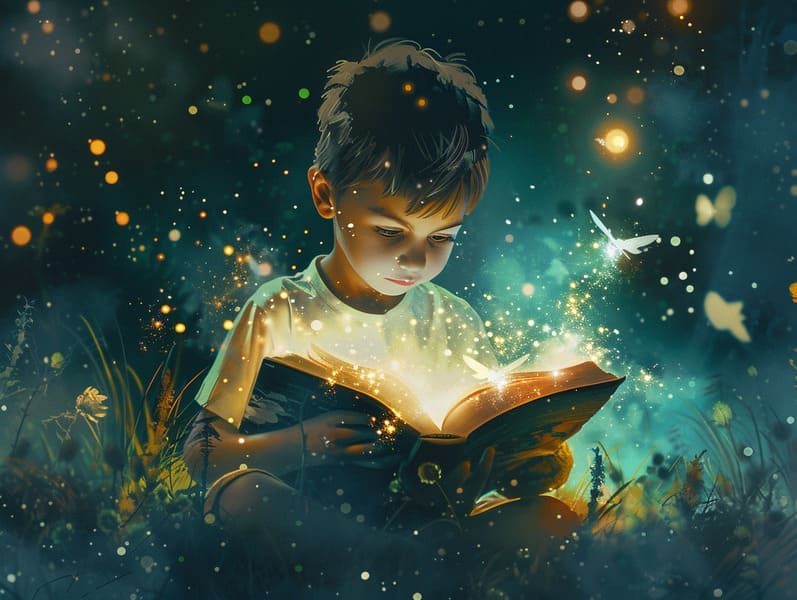The Creation of Mythical Fairy Tales and Their Persistent Spell.
The Creation of Mythical Fairy Tales and Their Persistent Spell.
Blog Article

Fairy tales for kids have timeless appeal. These tales have been told from one generation to the next far before they were ever published. They sprang from a variety of civilizations, including Indigenous traditions. They were initially passed along among adults, often carrying themes and messages relevant to the societal norms and beliefs of the time.
The Brothers Grimm, Jacob and Wilhelm, were among the first to compile many of these beloved tales. Their collection, "Grimm's Fairy Stories," included stories like "The Little Glass Slipper," "Hansel and Gretel," and "Schneewittchen," which have since become mainstays in the world of famous fairy tales. Similarly, Hans Andersen's fantastical fairy tales, such as "The Story of the Little Mermaid," and "The Little Duckling," have floated into hearts worldwide, ensuring their place in the pantheon of iconic fairy tales.
Though they are old, traditional fairy tales remain as applicable as ever, especially as bedtime stories for kids. These whimsical stories are now available in different formats, including beautifully illustrated books, fantastical animations, and online storybooks.
Their unwavering allure can be attributed to several fascinating points:
Significant Morals: Ancient fairy tales often illustrate important moral lessons. Tales like "The Boy Who Cried Wolf" teach the benefit of sincerity, while "The Story of the Tortoise and the Hare" exemplify the values of perseverance and humbleness. These stories offer the young clear distinctions between right and wrong, forming their moral compass in a gentle yet profound way.
Compassion and Knowledge: Fairy tales frequently feature heroines facing challenges and problems, inspiring readers to resonate with their struggles and boost their triumphs. For instance, "The Story of Beauty and the Beast" highlights the merit of appreciating inner worth to understand the real character of a person, cultivating empathy and appreciation.
Cultural Recognition: Many classic fairy tales are imbued with the cultural contexts from which they emerged. Immersing in these fairy tales can provide delightful insights into different societies, promoting a sense of cultural appreciation and awareness.
Inventiveness and Imagination: The enchanted elements in traditional fairy tales—mythical entities—fire up children’s inventiveness. These tales take readers to otherworldly realms, stimulating creative ideas and a sense of fascination that endures a lifetime.
Traditional fairy tales are not only delightful but also edifying. They provide delightful tools in promoting various mental these guys and emotional abilities in young ones. When ancient fairy tales are read aloud, they cultivate language skills by introducing new word meanings and complicated sentence structures. This practice also cultivates hearing perception and attentiveness, as young readers remain attentive, excited to see what happens next.
Furthermore, talking about the themes and characters of ancient fairy tales can advance evaluative skills and analytical skills. Young ones are led to see patterns, predict happenings, and comprehend cause and effect. These analyses also advance the young express their thoughts and feelings, contributing to their emotional intelligence.
In today’s cyber age, the proliferation of free fairy tales online has made these fairy tales more attainable than ever. Digital sites and apps feature ample collections of children's fairy tales that can be read or listened on anytime, anywhere. Fairy tales read out loud are particularly popular, providing an interactive way for children to engage with these entrancing tales. Voice books and narrated videos transport characters and settings to life, often supplemented by entrancing background sounds and soundtracks that enrich the story journey.
The timeless fascination of classic fairy tales lies in their ability to adjust to modern times while maintaining their underlying messages. Contemporary revisions of these tales often include more representative characters and modern settings, making them familiar to today’s audience. However, the core values of valor, compassion, and impartiality remain unchanged, continuing to reach readers of all ages.
Old fairy tales also offer a sense of reassurance and closeness. They bequeath a well-ordered narrative with a obvious beginning, middle, and end, often wrapping up with the culmination of conflicts and the triumph of morality over immorality. This predictability can be heartening for little ones, distributing a sense of invariability in an ever-changing world.
Traditional fairy tales continue to enchant and teach new generations, maintaining their wonder and meaningfulness in modern society. As children's night stories, they bequeath a perfect blend of enchantment and education, nurturing moral values, empathy, and creativity. The proliferation of web-based fairy tales and the favor of fairy tales spoken ratify that these traditional narratives remain attainable to new generations.
By defending and making known these fairy tales, we continue to pay tribute to the rich tapestry of fables and cultural heritage. Whether you are viewing a artistically illustrated book, delving into a internet collection, or listening on an audio story, the attraction of Grimm's fairy tales is always within reach. These stories remind us of the enduring strength of narratives and its ability to gather us across centuries and lands.
Even if you are seeing a richly illustrated book, delving into a electronic collection, or listening via an read-aloud story, the loveliness of popular fairy tales is always within reach.
These fairy tales reveal of the everlasting force of narratives and its ability to gather us across epochs and places, weaving a spell that charms and informs alike.